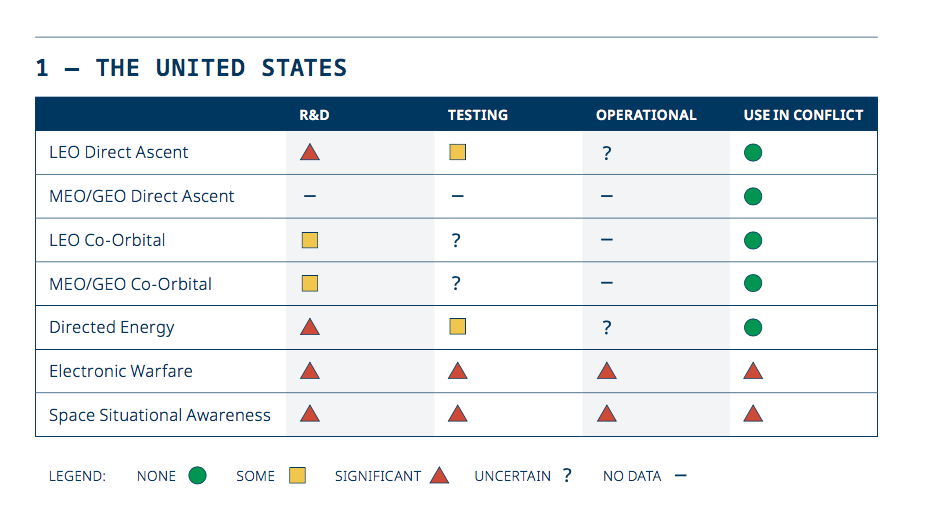Russia has used space assets in its assault on Ukraine, including using electronic warfare capabilities against targets in orbit and interfering with European Sentinel-1 SAR satellites over the country, according to a new report evaluating the counterspace capabilities of 11 countries.
The Secure World Foundation on Friday released the 2023 version of its annual Counterspace Report, which details the space capabilities of the US as well as adversaries like China and Russia. Though multiple countries are capable of both destructive and non-destructive counterspace activities, no one has used destructive capabilities in military operations.
Counterspace= the set of capabilities or techniques that are used to gain space superiority.
“Global Counterspace Capabilities: An Open Source Assessment” takes a look at publicly available information from 11 countries to assess their near-term and future counterspace capabilities in five categories:
- Direct-ascent: weapons that use missiles to destroy satellites, but are not placed into orbit themselves
- Co-orbital: weapons that are placed into orbit and then attack the target by destructive or non-destructive means
- Electronic warfare: weapons that use radio frequency energy to interfere with satellite communications
- Directed energy: weapons that use focused energy (think laser, particle, or microwaves) to harm space systems
- Cyber: weapons that use software/network techniques to harm computer systems
The covered countries are: the United States, Russia, China, India, Australia, France, Iran, Japan, North Korea, South Korea, and the United Kingdom.
The lowdown: The US, Russia, and China are the most advanced in their counterspace efforts, with capabilities ranging from ASAT to directed energy weapons to the capacity to develop co-orbital technologies. India’s shift from a civil to a military focus on space is relatively recent, but the country has demonstrated ASAT capability. Australia, France, Japan, South Korea, and the UK have also only recently begun expanding the military focus on space but have historically specialized in things like hosting ground infrastructure and satellites. Japan also has latent ASAT ability via its missile defense system. Iran and North Korea both have nascent space programs, but can interfere with satellite signals and jam civilian GPS signals. North Korea’s technological abilities are less well known.




